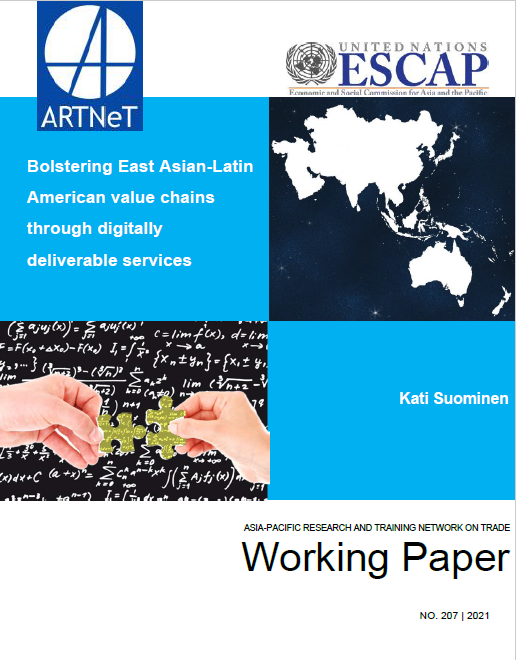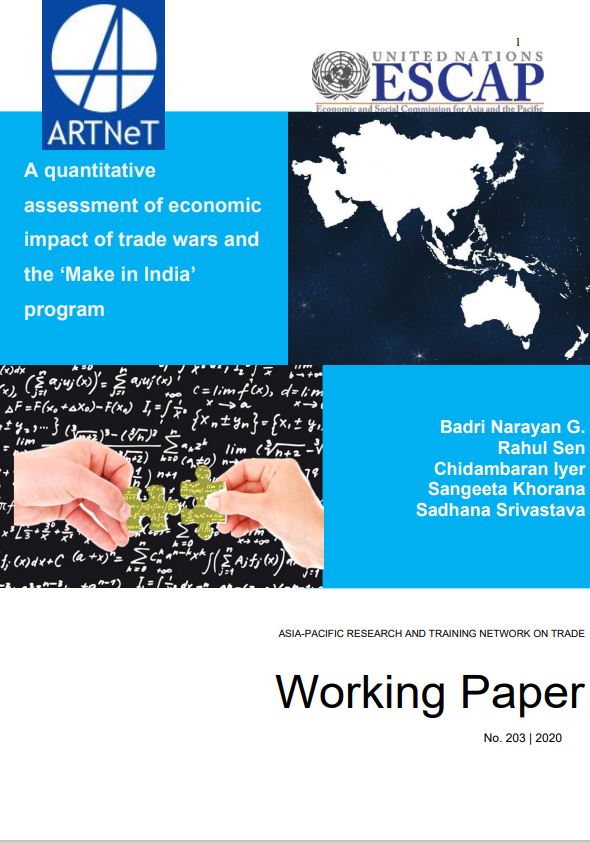Ex-ante evaluation of India’s trade alliance with Indo-Pacific region: A general equilibrium analysis
This study attempts to analyse the economy wide impact of Indo-Pacific alliance between India and rest of the 45 participating countries. We introduce four simulation scenarios in the general equilibrium model. First scenario is the one in which India bilaterally liberalizes trade in terms of tariffs liberalization alone and then removal of tariffs and reduction of non-tariff barriers together with all the countries of Indo-Pacific region. Second scenario is when India bilaterally liberalizes trade with all the Asian countries of the Indo-Pacific region.
IPR waiver in vaccines and opportunities for India: what does the data show?
In light of the spread of Covid-19 cases in India during the second wave, the Government of India (GOI) decided to negotiate for an IPR waiver under section 1 (copyright and related rights), 4 (industrial designs), 5 (patents), and 7 (protection of undisclosed information) of TRIPS Agreement under the World Trade Organization (WTO). The expectation of the GOI is that the proposed IPR waiver would allow more firms to come forward to manufacture vaccines, medicines, and other COVID-19 related medical items, which would in turn augment their availability at an affordable price.
If the US-China trade war is here to stay, what are the risks and opportunities for other GVC economies outside the war zone?
Over the last three years, trade tensions between the United States (US) and China have transformed a fairly open bilateral trading environment into a rather protectionist one. The new administration of the United States has maintained most of the bilateral tariffs and non-tariff barriers put in place by the previous administration. Moreover, incentives to diversify trade partners and localisation have been intensified following COVID-19-induced global supply-chain disruptions.
Digital economy integration in Asia and the Pacific: insights from DigiSRII 1.0
In this paper, we utilize ESCAP (2020)’s framework of Digital and Sustainable Regional Integration Index version 1 (DigiSRII 1.0) to uncover digital economy integration trends across Asia-Pacific region. The results show that Asia and the Pacific has progressed well on conventional digital economy integration, especially due to significant improvements on digital-economy infrastructure and ICT goods trade liberalization.
Bolstering East Asian-Latin American value chains through digitally deliverable services
Digitally deliverable services play a growing role in export-driven production in the FEALAC region, but digitally deliverable services from Latin America are used only to a limited extent by producers in Asia, and vice versa. However, this disguises the fast growth in Latin American-Asian digitally deliverable services trade in the past 15 years. Asian manufacturing, agricultural and services exporters have significantly expanded their sourcing from providers in Costa Rica, Chile and Colombia, while Latin American producers have increased sourcing from China, the Philippines and Japan.
A primer on quantifying the environmental benefits of cross-border paperless trade facilitation
The governance of international trade incurs major costs, including to the environment. Global supply chains are complex, and traditionally involve the printing, dispatching, processing, exchanging, and ultimately discarding of vast quantities of paper documents. Trade facilitation, and particularly the implementation of cross-border paperless trade, have the potential to significantly reduce these environmental burdens.
East Asian trade integration in the era of global value chains: Prospects and challenges
This paper examines trade integration of East Asian countries through the lens of global value chains (GVCs). It first gauges the extent and involvement of trade in value-added (TiVA) for East Asian countries. The analysis confirms that reliance on backward GVC participation outside of the region still looms large in East Asia. This implies, in addition to deepening intraregional integration, linking with global trade and production networks remains important.
Regional Integration In Bay Of Bengal Region In Post-COVID-19 Period
Bay of Bengal countries have been affected heavily by the ongoing Coronavirus pandemic. This article argues that the regional cooperation could help in reducing the costs of pandemic-driven barriers. The responses to the Corona pandemic also suggest a greater scope of regional cooperation among the countries in the Bay of Bengal region. Regional integration may help the Bay of Bengal countries overcome divisions that impede the flow of trade in goods and services, people and ideas, particularly when all members have been facing a common challenge to beat the Coronavirus pandemic.
A quantitative assessment of economic impact of trade wars and the 'Make in India’ program
In a unique attempt, our paper aims to provide a quantitative economic assessment of the impact of “Make in India”, a flagship program for industrialization, launched by the Government of India in 2014, combining it with the global trade war of 2017-18. We analyze whether the expected favourable impact of the former was reversed due to its reactive policies compared its pro-active policies, and whether it worsened due to the trade war, whose effects continue to aggravate in a post-COVID recalibration of global supply chains.



